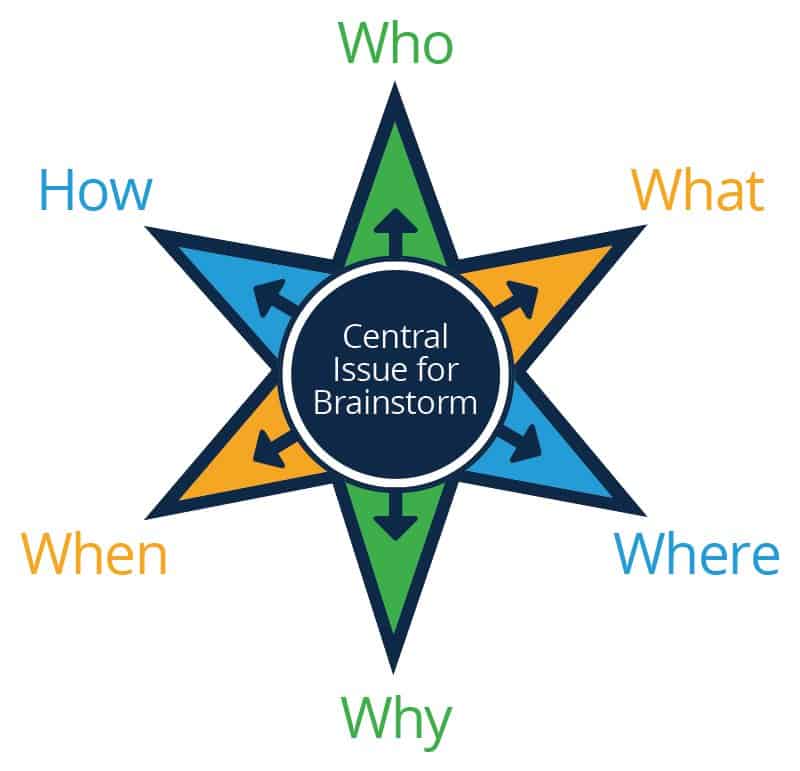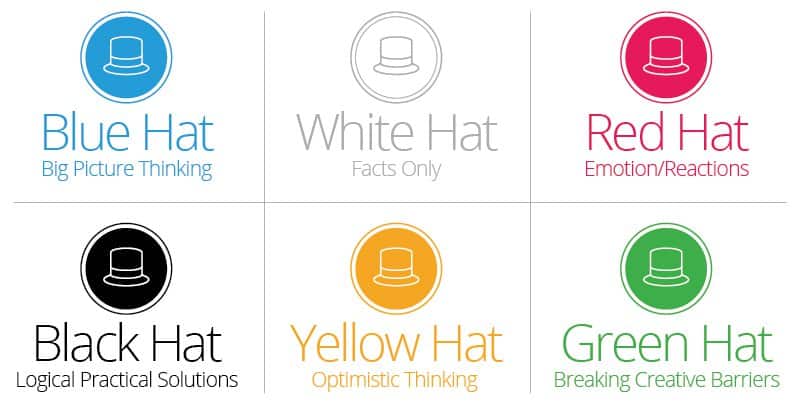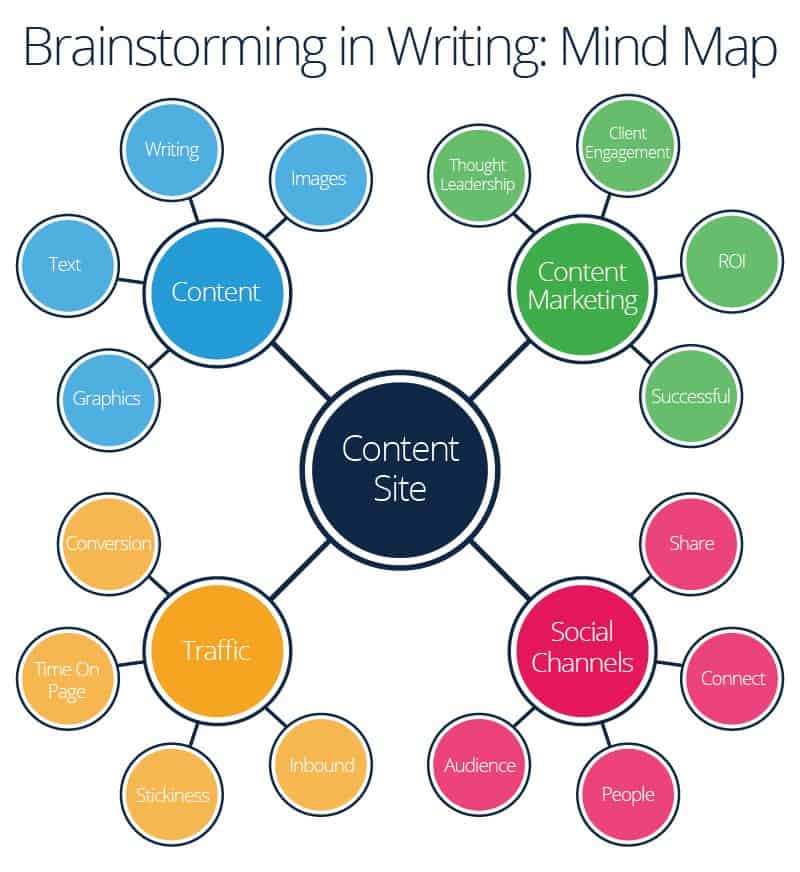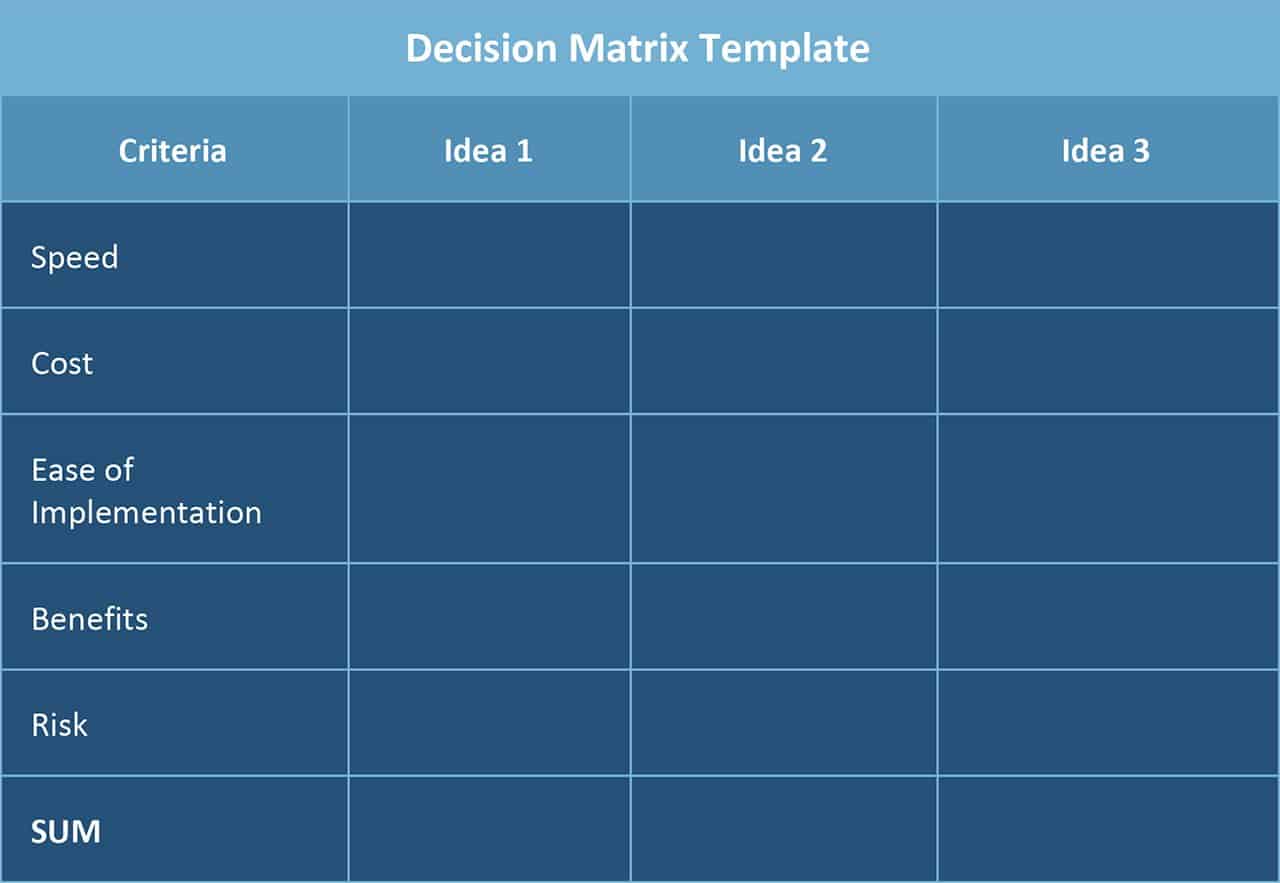What Is Brainstorming and How Did It Start?
In the 1940s, Madison Avenue advertising executive Alex Osborn, who was seeking new ways to help his teams develop ideas for creative campaigns, came up with the concept of brainstorming. He then provided descriptions of the brainstorming process in his books Your Creative Power, published in 1948, and Applied Imagination, published in 1953.
Osborn defines brainstorming as a technique “by which a group attempts to find a solution for a specific problem by amassing all the ideas spontaneously by its members.” Osborn’s key principles included deferring judgement and encouraging participants to develop as many ideas as possible to encourage fresh thinking, even if – in fact, particularly if - that included wild and crazy ideas.
Ever since Osborn’s original brainstorm, brainstorming has become an incredibly popular strategy for achieving breakthroughs, and has been used by many corporations and other organizations to solve problems of all types.
Project Management Guide
Your one-stop shop for everything project management

Ready to get more out of your project management efforts? Visit our comprehensive project management guide for tips, best practices, and free resources to manage your work more effectively.
Why Is It Important to Brainstorm?
So why do so many people think brainstorming is important? Brainstorming allows you to accomplish a lot of essential goals, including the following:
- Solving Entrenched Problems: The fresh thinking inspired by brainstorms can help people avoid repeating the same mistakes and finally resolve issues.
- Breaking Established Idea Boundaries: Brainstorming is designed to help people come up with new and different ideas – even “wild and crazy” ones – and thus find innovative solutions.
- Generating and Organizing Ideas: Through brainstorming, groups of people can band together and create lots of new ideas, and then sort through them and prioritize.
- Better Managing Your Time: The group effort and focus on developing lots of ideas quickly allows teams to work efficiently.
- Reducing Social Inhibitions Among the Team: By encouraging team members to work together as a group and suspend judgement, a well-run brainstorm can inspire people to communicate freely and openly.
With so many advantages, it’s not surprising that brainstorming has spread so quickly throughout the business world. However, it’s also critical to use the right techniques to ensure you get the most from your brainstorm and accomplish these important goals.
What Is the Process of Brainstorming?
The brainstorming process involves several different components. It begins with planning, including choosing the right group size, appointing and training a group facilitator, and organizing the location setup. During the brainstorm, establishing objectives and ground rules will be key to getting off to a good start. From there, the group can conduct warm-up exercises before moving on to generating ideas, and then manage the flow of ideas to get the most from the session.
What Is a Brainstorming Session?
As mentioned above, a successful brainstorming session doesn’t magically happen. It takes careful planning and involves many elements to create a welcoming environment that encourages people to share their ideas. Each of these components are discussed in detail below.
Group Size: Osborn thought that groups of 12 were ideal for brainstorming, but many different group sizes can be effective – even individual brainstorming. However, large meetings should consider breaking into smaller groups of no more than 12 to ensure that all participants have an opportunity to be heard. It’s also important to consider what types of people to include in a brainstorm: People with similar backgrounds may be more likely to come up with the same ideas, so choosing people with different roles and experience could be helpful.
Group Facilitator: Appointing a facilitator or moderator is also imperative to start the session off productively and keep it on track. The facilitator should begin the session by defining objectives and establishing ground rules, and then guide discussion. This includes encouraging everyone to share ideas – even the quietest people – discouraging anyone from criticizing ideas, and refocusing the discussion if it gets off track. Taking breaks can also help re-energize participants during longer sessions. While facilitators can also share their own ideas, their primary focus should be on driving the discussion. Note that recording ideas can be difficult to combine with facilitating, so it may be best to appoint someone else to take notes.
Physical Setup: Brainstorms should take place in a comfortable space where no interruptions will occur. To encourage fresh thinking, participants who normally work together in the same office may benefit from an offsite location. Make sure you have everything you need, which could include whiteboards, paper or sticky notes and pens, as well as any necessary props for the brainstorming techniques that you will use.
Music can also help loosen up the group and get things started. However, you should make sure the music works for the age and interests of the group – country music might not work in an urban setting, and hip-hop might not be the best choice for senior professionals. Think carefully about how you want to influence the energy and mood: An upbeat, up-tempo song might help wake people up in the middle of a longer session, while a quieter piece without words might help them focus. And of course, any music you play needs to be work-appropriate.
Defining Objectives: To begin the session, the facilitator should explain the reason for the brainstorming, including the problem everyone is trying to solve and the desired outputs. Osborn believed focusing on a single issue was the most efficient approach for a brainstorm, but multiple questions can be addressed in a series of sessions or by different sub-groups of participants.
Ground Rules: In order to stay productive and get results, it’s essential to establish some ground rules for the discussion. Typical ground rules include the following:
- Define Housekeeping Rules: Keep everyone focused on the discussion by requiring participants to turn phones off and close their laptops, if possible. Ask participants to return from breaks promptly, begin sessions on time, and ensure everyone has a chance to be heard.
- Value Quantity Over Quality: The purpose of a brainstorm is to come up with lots of new ideas, and it doesn’t matter if all of them are winners. Focus on generating as many ideas as possible up front - you can always prioritize them and edit them down later.
- Think Fast: Rapid ideation is also critical to a successful brainstorm that generates plenty of ideas. Accordingly, it’s important to remind people not to look to achieve perfection, but rather to quickly come up with ideas.
- Withhold Criticism: Creating a welcoming space is also essential to the brainstorming process. Encourage everyone to keep their minds open and save any potential objections or issues until later.
- Welcome Wild Ideas: Brainstorming is all about coming up with ideas that you wouldn’t normally think of, so don’t rule out any ideas as being too “out there.” Even if an idea seems too crazy to work, it may still lead to some real solutions.
- Avoid Rewarding Ideas Too Quickly: Ideas that seem like the perfect solution shouldn’t be embraced too soon. Coalescing around a single compelling idea can cut the discussion short and keep everyone else from coming up with solutions. Again, encourage everyone to provide as many different ideas as quickly as you can. Choosing the ideas you are actually going to implement comes later.
Warm-up Exercises: Warm-up exercises or icebreakers can help loosen up the group and make them feel more comfortable with generating ideas. They are particularly helpful for sessions where many people have not met before, or where there has been tension within the team. Here are some useful approaches for warming up:
- Getting to Know You: Encourage people to share information about themselves with games like “two truths and a lie” or an introduction along with a little-known fact. Even asking people to share something simple like their favorite food or most recent vacation can help build a team.
- Make People Laugh: Ask people to create jokes related to your brainstorm or another topic of your choosing based on a specific format, like a knock-knock joke, limerick, or pun.
- Run-on Story: Start off by having one person tell the first sentence to a story, and then go around the room and ask everyone else to build on it with an additional sentence. This leverages the classic improv technique of “yes, and. . .” Another variation is using the setup “going on a picnic,” where everyone adds on something to bring.
- The Expert Pitch: This improv-derived technique asks everyone in the room for two nouns to combine, then gets an “expert” to describe this imaginary product, why it is so great and why everyone needs one. It’s a particularly good exercise to try for groups of salespeople.
For more ideas of great team building activities, read this article.
Generate Ideas: This section is the heart of any brainstorm. There are a variety of ways to help drive idea generation, which are detailed below in “Best Brainstorming Approaches for Generating Ideas.” Following the ground rules will also be key to success in this section.
Manage Idea Flow: A number of techniques can help ensure that everyone has a chance to be heard, and that the discussion doesn’t hit roadblocks so the ideas can keep flowing.
This general outline should let you know what to expect from your brainstorming session, so now let’s move on to the central component of brainstorming: The best approaches for generating ideas.
Best Brainstorming Approaches for Generating Ideas
- Drivers Analysis: Rather than jumping to find solutions to a problem, start by understanding its causes. For example, you could focus on what’s driving a sales decline or a lack of product innovation. Understanding the drivers behind an issue could then reveal potential solutions.
- Starbursting: With this approach, you begin with a six pointed star. Write the central issue for your brainstorm at the center, then at each point of the star write a question word: who, what, where, when, why, and how. From here, generate questions relevant to the topic and then use the questions to generate discussion.
- Forced Limitations: Set some artificial limitations to help encourage everyone to think creatively. For example, ask your team to solve a problem within a month, or with a limited budget, or with only one person dedicated to working on the task.
- Gap Filling: Start with your current situation, and then decide where you want to be. You can then identify all the steps and items you need to get from A to B.
- S.C.A.M.P.E.R.: This approach helps you build and improve on ideas by approaching them from different angles. Each letter correlates to a specific question about the issue you are brainstorming:
- Substitute: What would happen if we swapped X for Y?
- Combine: What would happen if we combined X and Y?
- Adapt: What changes would we need to make to adapt our project for a different situation?
- Modify: What could we modify to create more value with our project?
- Put to Another Use: What other uses or applications could our project have?
- Eliminate: What could we remove from the project without compromising it?
- Reverse: How could we reorganize our project to improve it?
- SWOT Analysis: This business school classic involves identifying your organization’s Strengths, Weaknesses, Opportunities and Threats. By starting with a better understanding of your current situation, you can then move on to finding new solutions and ideas. For a deeper understanding of SWOT analysis and some helpful templates, read 14 Free SWOT Analysis Templates.
- POV Reassignment: Ask everyone to think of their issues from a completely fresh perspective, such as:
- Time Travel: How would you deal with your issue in a different time period, such as 50 years ago or 100 years ago? Or 100 years in the future?
- Teleportation: What if you were in a different region or country, or even on a different planet? How would you resolve your issue then?
- Attribute Change: How would you resolve your problem if you were a different age, a different gender, or a different ethnicity? You can consider many different types of attributes if relevant to your brainstorming issue.
- Role Play: When you have people from different disciplines in the room, have them switch perspectives and think about the issue from another point of view. This also works well when trying to get inside the mind of clients or customers.
- Five Whys: This approach encourages you to dig deeper by starting with a description of your issue and then asking, “Why is this happening?” Once explanations are provided, again ask “Why does that happen?” Repeat until you’ve asked “why” five times for a much deeper understanding of the problem.
- Trigger Statements: Use a “trigger” such as an open-ended sentence or a deliberately provocative statement to help foster new ideas. For example, you could begin with “Delays always start when ______” or “Our competition is so ahead we might as well hand them our business.”
- Six Thinking Hats: Developed by psychologist and author Edward de Bono and explained in his book Six Thinking Hats, this approach uses virtual “hats” that relate to different modes of thinking. Your group can try on a specific hat and analyze a problem from that perspective for a few minutes, then switch to a different one for a fresh angle. The hats include:
- Blue: Looks at the big picture as a manager would, similar to someone chairing a meeting.
- White: Focuses solely on information and determining the facts.
- Red: Emphasizes emotion, focusing on feelings, intuition, and gut reactions.
- Black: Always remains logical and practical, preferring cautious and conservative solutions.
- Yellow: Always sees the bright side of things, and looks to identify benefits in every situation.
- Green: As the creative hat, the wearer looks to break boundaries with provocative statements and a willingness to explore thoughts to their extremes.
- Reverse Brainstorming: This approach helps you challenge the expected by asking, “What would someone usually do in our situation?” Then, imagine doing the opposite. From here, you can then ask whether the opposite approach would also work, and if so why, as well as challenge the expected approach.
- Alter Egos/Superheroes: Imagine how a famous person or a superhero would solve your problem. For example, How would Abraham Lincoln straighten out your accounting department? How would the Flash charge up your sales efforts? If they can do it, perhaps your team can find a way to do it too.
- Group Drawing/Sketching: This spin on word association techniques involves breaking up your group into individuals or small teams. Have one person or group draw something related to your issue, then pass the sketch to the next group to build on with a related drawing on the same sheet. No artistic talent required!
- Medici Effect: This approach encourages you to look for parallels in unrelated industries. Perhaps you’re trying to solve a problem for an insurance company. How would you approach that same problem if you were Starbucks, Toyota, or Apple?
- Story Boarding: Identify relationships between ideas and issues by arranging them into a narrative. This works best with a whiteboard and lots of sticky notes: Ask everyone to put relevant thoughts on the stickies – it can include drawings or just a single word – and then create a story by placing them in order on the board.
- Freewriting: Particularly useful for individual brainstorming, this technique involves simply setting a time or page limit and then spending that entire time writing whatever comes to mind – with no concern for spelling or preserving thoughts for the ages. While there may be a lot of filler in the final product, you also may find some hidden gems.
What is Brainstorming in Writing?
Associative brainstorming uses techniques that help participants find connections between different concepts in order to spur new ideas. These exercises always involve writing. Some examples include:
- Mind Map: With a mind map, you visualize the relationships between different ideas. Begin by writing down the goal for the brainstorm, then add related issues and concepts. From there, sketch out the relationships between the different components on the map.
- Word Storm: Start with a couple of different words related to the central issue. From there, write down as many words as you can think of that the original words bring to mind. Once you have a critical mass of words, start grouping them together based on their relationships.
- Word Association: Similar to the word storm, write down as many words as you can that are related to your core brainstorming topic. However, don’t worry about grouping them together – just keep the words flowing – as the goal is to come up with unexpected words that are linked to your brainstorm. You can also use this approach as a warmup exercise.
- Word Bank: Determine specific categories of words you want to use for a writing project, then create lists of words that fit. This is particularly useful for copywriting exercises such as writing headlines or mission statements.
Group Idea Flow Management
With so many approaches to brainstorming, you might expect ideas to flow thick and fast. Unfortunately, that is not always the case. Idea flow management techniques like the following are critical to keeping your brainstorm session productive:
- Osborn’s Method: Osborn believed in the principle of 1+1=3. He emphasized having groups build on ideas so they could create even more ideas, rather than shutting ideas down through criticism.
- Brain Writing: Rather than immediately moving into open discussion, you can begin by having everyone write down thoughts and ideas individually. This encourages all participants to contribute without any concerns about getting pre-judged or drowned out of the conversation. This can be done anonymously, with everyone writing their thoughts on identical index cards. In “directed brainstorming,” participants can then exchange cards and build on the ideas they discover, and repeat over several rounds to refine ideas.
- Electronic Brainstorming: Groups who can’t meet in person can develop and exchange ideas in an online or virtual forum. This approach can also be used as pre-work; you can develop all ideas later in an in-person discussion session.
- Bad Ideas First: This tactic is simple. Spend 10 minutes encouraging everyone to provide as many “bad ideas” as possible. This removes the fear of failure from the room and gets everyone talking. And some of those bad ideas might turn out to be not that bad after all.
- Round Robin: Make sure everyone participates by going around the room and asking each person to share an idea – no exceptions allowed! Anyone who wants to propose a second idea or critique an idea must wait until everyone has contributed. This helps ensure all participants join into the discussion.
- Stepladder: In this variation on the round robin, you start by explaining the brainstorming challenge to everyone, and then send everyone out of the room except for two people. Those two people will have a specific period of time to come up with ideas; once the time elapses they will be joined by a third person, who will share his or her own ideas, then hear the ideas from the original pair. Repeat until everyone has come back into the room.
- Charette Procedure: This version of the round robin is designed for large groups. Start by breaking up a large problem into smaller chunks for groups of people from different departments to discuss. After the first group discusses one of the issues, they turn their ideas over to the next group to discuss and develop. At the end of the Charette, ideas will have been quickly vetted by a large multidisciplinary team.
These approaches should help you avoid problems with your brainstorming session. But it’s important, nonetheless, to understand common brainstorming challenges in advance so you can avoid them.
Common Brainstorming Challenges and Tips to Overcome Them
Brainstorming isn’t as easy as it may seem, and there are a number of pitfalls that can emerge. Here’s some of the most common ones, along with tactics for avoiding them.
Anchoring/Blocking: Professors Leigh Thompson and Loran Nordgren of Kellogg School of Management at Northwestern University have researched this common issue. Essentially, one person begins with an idea that makes sense, and everyone then adopts this idea instead of coming up with their own. This blocks new ideas from being discussed, so much of the value of the brainstorming session is lost.
If you’re concerned this could happen in your brainstorming session, consider trying either a brainwriting or a round robin-type approach. By making it mandatory that everyone shares ideas and avoiding group discussion until multiple people have had a chance to contribute, you’ll make anchoring and blocking much more difficult, if not impossible.
Free Riders: Free riders sit quietly in the back of the room and avoid contributing to the discussion, thus preventing the group from benefiting from their ideas – and potentially breeding resentment amongst everyone else who may feel they are doing all the work. You can help avoid the free rider problem by making sure groups don’t get too large – in a group of five to seven people it’s much more noticeable if one person stays silent which should encourage more participation. As with anchoring, brainwriting and round robin techniques can also encourage everyone to get involved.
Social Dynamics: Personality issues can contribute to the free rider and anchoring issues. An introvert may be much more uncomfortable with speaking out than an extrovert, or a particularly outspoken person may dominate the entire conversation. Alternately, different factions can form within the larger group and cause conflict, or drown others out. These problems are sadly common: Indeed, Leigh Thompson’s research has found that in most traditional brainstorming meetings, just a few people do up to 75 percent of the talking.
While written techniques can also help here, a good facilitator can play an even more important role. He or she can make sure to ask the quieter people for their opinions, and neutralize those who tend to dominate the conversation by giving them roles like taking notes to keep them busy. If conflict arises, reminding everyone about the ground rules established in the beginning and forcefully reminding them to avoid criticizing ideas up front should help.
Getting “Stuck”: Sometimes brains just refuse to storm, and you may find your group has simply run out of ideas. Mixing things up can help in this situation. If one approach isn’t working, try the “power combination” where you combine multiple approaches. Perhaps you started with “starbursting” and got stuck? Then try seeing how a superhero would answer the questions you developed.
Idea switching is another approach that works well, particularly with larger groups. Break into two groups and have them each develop ideas; each group will then pass off their ideas to the other to see how they can build on and expand the ideas.
In some cases, the issue may be that you don’t even know where to start. A “question forum” may work better here: Rather than looking for solutions, start out by asking everyone to contribute as many questions as they can, and then prioritize them in order to determine the true subject of your brainstorm.
Evaluation Apprehension: Otherwise known as “fear of failure,” this problem can also discourage people from sharing ideas. It can be a particular issue when a brainstorming group includes people from multiple levels, as lower-level staff may be concerned about being embarrassed in front of senior leaders. A number of tactics can help break down these barriers. First, it’s critical to outline the importance of suspending criticism at the start. Second, you can use the “bad ideas first” approach to get people talking and remove some of the fear about saying a “stupid” idea out loud. Anonymous idea submissions can also encourage people to take more risks. And for mixed-level groups, it may be useful to state up front that the goal is simply to amass as many ideas as possible and that ideas will not be assessed or ranked during the meeting.
Managing and Delivering Results
So you’ve used our guide to avoid common problems and your brainstorming session has used a variety of fun techniques to generate a ton of great ideas? That’s wonderful, but you’re not done just yet. To fast-track your ideas and ensure they turn into action, you’re going to need to think about the next step: Getting results.
Evaluate Ideas: At some point, you will need to evaluate and prioritize the new ideas. Some groups may choose to do this separately to avoid any feelings of judgement or negativity, but the right kind of framework can keep everyone focused on positive feedback. Approaches to this can include:
- Pros and Cons Lists: Pros and cons are a well-established framework for making decisions, and can be used to evaluate brainstorming ideas. You can make the outcomes even clearer by weighting your pros and cons, so particularly important advantages and disadvantages count more.
- Decision Matrix: Alternately, the group can determine key attributes for assessing the success of a solution, e.g. “can be done as quickly as possible” or “pays for itself within a year.” You can then rank the ideas against the matrix.
Download Decision Matrix Template
- Voting: This can be a particularly fast and efficient way to get feedback, and it can also avoid stress if ideas and/or votes are kept anonymous. For example, the facilitator can be solely responsible for collecting and sharing ideas, and then gathering votes. Alternatively, with a “gallery” approach teams can post their ideas on the wall, and then individuals can walk by, review them and vote for the ones they like best.
Assign Tasks and Follow Up: Once the team evaluates the ideas, the group can then move on to next steps. The facilitator can look to assign tasks, one of which needs to include documenting all the ideas shared at the session and distributing it to all participants. Providing a firm future date for following up on the brainstormed ideas can also help ensure that the group stays on task and knows that their ideas are being taken seriously. After all, while a brainstorm may result in some great ideas, they won’t make much of an impact if they never become reality.
Manage Brainstorming Techniques with Work Management in Smartsheet
Empower your people to go above and beyond with a flexible platform designed to match the needs of your team — and adapt as those needs change.
The Smartsheet platform makes it easy to plan, capture, manage, and report on work from anywhere, helping your team be more effective and get more done. Report on key metrics and get real-time visibility into work as it happens with roll-up reports, dashboards, and automated workflows built to keep your team connected and informed.
When teams have clarity into the work getting done, there’s no telling how much more they can accomplish in the same amount of time. Try Smartsheet for free, today.



